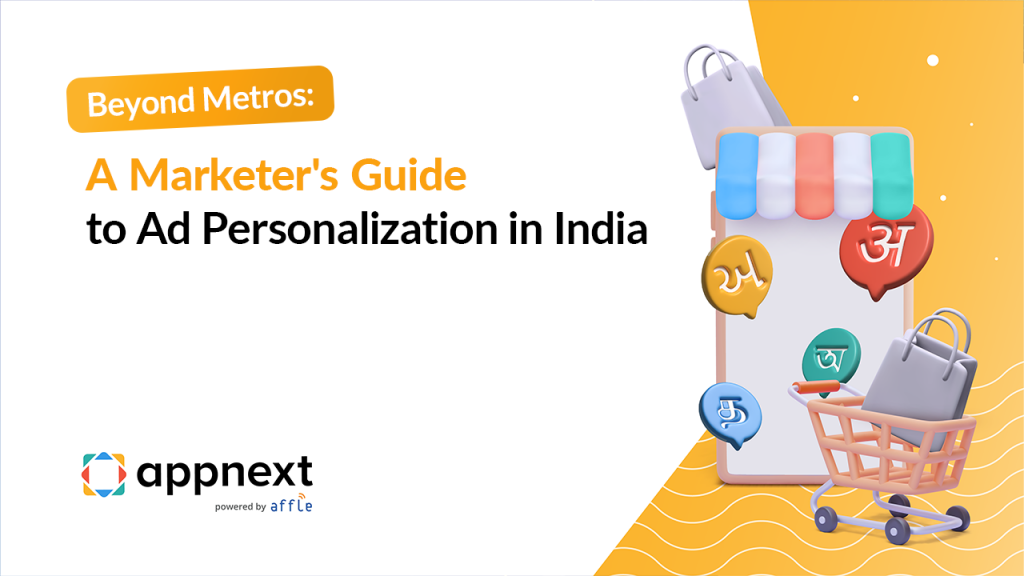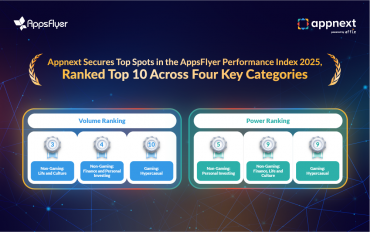Introduction
India’s mobile landscape is a marketer’s dream and challenge, all at once. With over 85% of households having mobile penetration and Android dominating nearly 95% of the market, the potential to reach users directly is unprecedented. However, this immense audience isn’t a monolith. They are spread across thousands of cities, speak hundreds of dialects, and are tired of irrelevant ads. The era of broad-stroke marketing is over. To win in 2025 and beyond, brands must master hyper-local, intent-driven ad personalization in India, turning mass reach into meaningful, one-on-one connections.
The Real India: Why Hyper-Local is the New Mainstream
For years, marketing strategies in India were built around a handful of metro cities. Today, that playbook is obsolete. The real engine of digital growth is firing up in Tier 2 and Tier 3 cities like Jaipur, Lucknow, and Coimbatore. Consumers in these regions have unique aspirations, distinct purchasing behaviors, and different cultural contexts. A campaign that resonates in Mumbai will likely fall flat in Madurai.
This is where hyper-local strategy becomes critical. It’s about understanding that a user in Pune looking for festive deals has different needs than a user in Patna. Effective mobile phone advertising today requires geo-aware messaging that speaks to local tastes, climate, and culture. By tailoring app promotions to specific regions, marketers can create campaigns that don’t just sell—they resonate.
Speaking Their Language: The Untapped Power of Vernacular
Imagine an app trying to explain a complex financial product in English to a native Hindi or Tamil speaker. The friction is immediate. In a country with over 22 official languages, English-only strategies alienate a massive portion of the potential user base. Vernacular communication is the bridge to building trust and ensuring your message is not just seen, but understood.
This goes beyond simple translation. It’s about cultural nuance. AI-powered app recommendations can now deliver these deeply personalized, vernacular experiences at scale. When an app promotion appears in a user’s own language, it feels less like an advertisement and more like a genuinely helpful suggestion, dramatically improving the effectiveness of mobile app user acquisition.
Q: Why is vernacular language so important for mobile marketing in India?
A: Because it builds immediate trust and relevance. When an app communicates in a user’s native tongue, it feels less like an ad and more like a helpful suggestion. This is especially true in Tier 2 and 3 cities where English proficiency may be lower, making vernacular content the primary way to connect authentically and drive higher engagement and conversions.
The Tech Behind the Touch: OEM Ads and AI Recommendations
So, how do you deliver millions of unique, personalized experiences every day? The answer lies in technology, specifically on the user’s device. Instead of fighting for attention on crowded social feeds, savvy marketers are leveraging OEM Advertising.
- OEM Advantage: OEMs build devices, so they can integrate ad placements directly into the user experience.
- Native Placements: Ads appear in smart folders, minus-one screens, or search results seamless and non-intrusive.
- AI Power: Platforms like Appnext analyze contextual signals (time, location, app usage) in real time.
- Personalized Discovery: Users see the right app at the exact moment they show intent.
- Impact: Creates high-quality installs by turning utility moments into discovery moments.
The Festive Season: Putting Personalization to the Test
Nowhere is the power of personalization more evident than during India’s festive season. This is when consumer intent is at its peak, but so is the marketing noise. A generic “Festive Sale” banner is easily ignored.
However, a personalized nudge based on behavior is a different story. Imagine a user who has been browsing recipes for Diwali sweets. A contextually relevant ad for a grocery delivery app offering discounts on festive ingredients is not an interruption; it’s a solution. This is the new standard for mobile app install campaigns. By understanding user intentions, brands and app marketers can create custom offers that feel helpful, timely, and are far more likely to convert.
Your Next Move
Winning in India’s dynamic mobile market means shifting from a strategy of shouting at everyone to one of speaking with someone. The brands that embrace hyper-local context, communicate in vernacular languages, and leverage the power of on-device AI will not only capture attention but also build lasting loyalty.
Frequently Asked Questions (FAQs)
1. What is hyper-local personalization and why does it matter in India?
- Hyper-local personalization is a marketing strategy that tailors content, offers, and recommendations to a user’s specific geographic location and cultural context.
- In a diverse country like India, it’s crucial because consumer needs, languages, and behaviors vary dramatically from one city to another. A generic national campaign misses these nuances.
- By personalizing at a local level for instance, promoting winter wear in Delhi and lightweight cottons in Chennai brands can deliver messages that are far more relevant, build a stronger connection with users, and significantly increase conversion rates.
2. How do OEM ads help with mobile app user acquisition in regional markets?
- OEM ads are uniquely effective for mobile app user acquisition in regional markets because they are integrated directly into the device’s interface, which users engage with daily.
- Placements like smart folders, device search, or pre-installed app stores provide a native discovery path. This allows marketers to reach users in Tier 2 and Tier 3 cities who might not actively search for new apps on traditional app stores.
- By appearing in a trusted, non-intrusive environment and often in the local language, OEM ads reduce friction and capture high-intent users right at the source.
3. What role does vernacular language play in effective ad personalization in India?
- Vernacular language is the cornerstone of effective ad personalization in India. It moves beyond simple translation to create a sense of trust and familiarity.
- When a user sees an app promotion or recommendation in their native language be it Hindi, Telugu, or Bengali the message instantly becomes more relatable and easier to understand.
- This is vital for complex services like finance or e-commerce, where clarity builds confidence. Using vernacular language shows respect for the user’s culture and dramatically lowers the barrier to engagement, leading to higher-quality installs and better retention.
4. How can AI-powered recommendations improve mobile app install campaigns?
- AI-powered recommendations transform mobile app install campaigns by shifting the focus from guesswork to data-driven precision. Instead of showing the same ad to millions, AI analyzes millions of real-time, contextual signals like apps a user frequently engages with, their location, or even the time of day.
- This allows an advertising platform to predict user intent and recommend an app at the exact moment it’s most relevant. This results in higher-quality installs from users who are genuinely interested, leading to better retention, increased lifetime value (LTV), and a more efficient use of marketing spend.
5. Are native ad placements more effective than traditional banner ads in India?
- Yes, native ad placements are consistently more effective than traditional banner ads in India. Banner ads are often perceived as disruptive and intrusive, leading to “banner blindness” where users subconsciously ignore them.
- Native placements, on the other hand, are designed to blend seamlessly into the user’s device experience.
- For example, an app recommendation in a smart folder feels like an organic suggestion, not a forced advertisement.
- This non-disruptive approach leads to higher engagement rates, better click-through rates (CTR), and a more positive brand perception, making them superior for long-term growth.




Comments are closed.